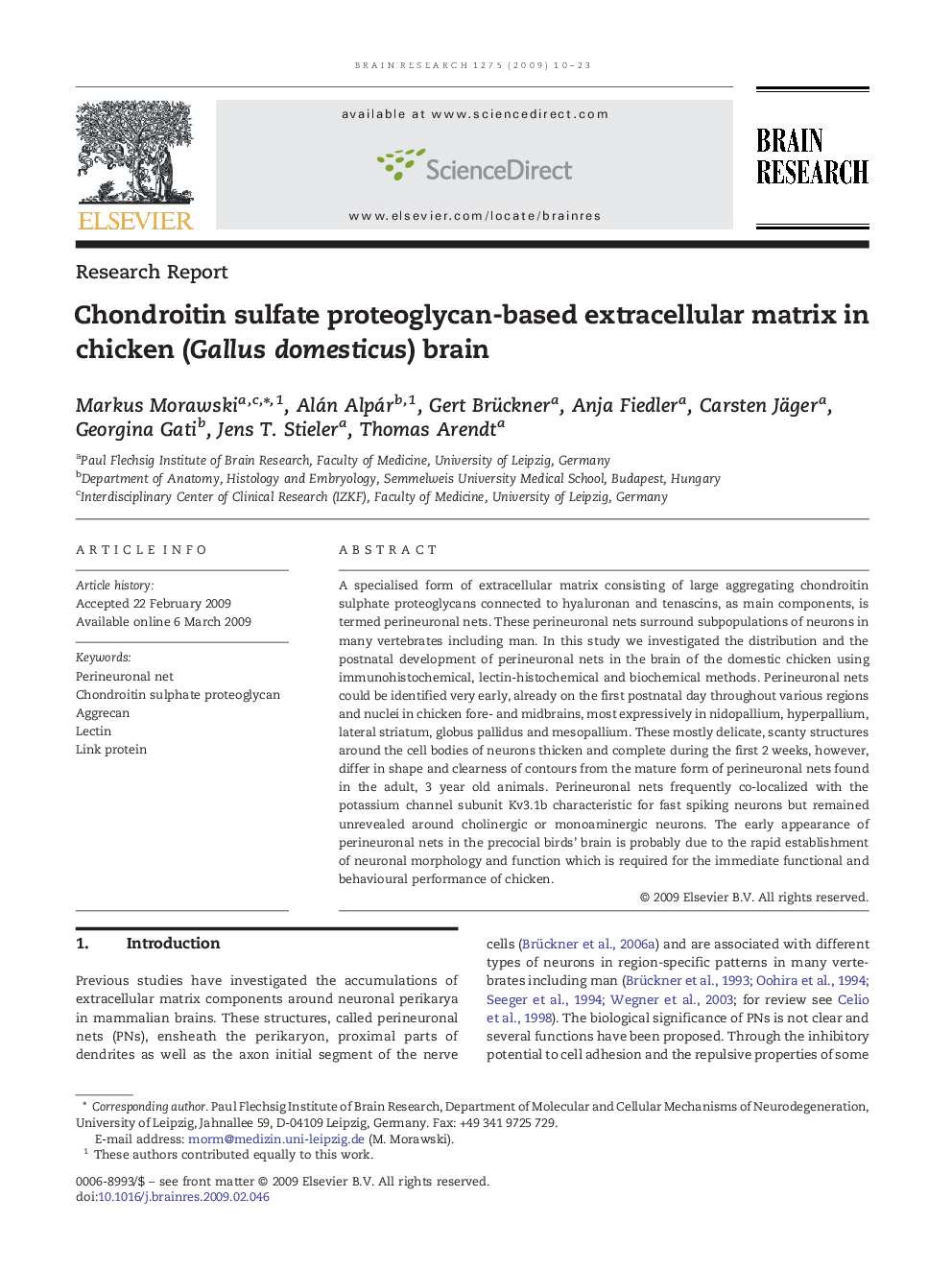| Article ID | Journal | Published Year | Pages | File Type |
|---|---|---|---|---|
| 4328262 | Brain Research | 2009 | 14 Pages |
A specialised form of extracellular matrix consisting of large aggregating chondroitin sulphate proteoglycans connected to hyaluronan and tenascins, as main components, is termed perineuronal nets. These perineuronal nets surround subpopulations of neurons in many vertebrates including man. In this study we investigated the distribution and the postnatal development of perineuronal nets in the brain of the domestic chicken using immunohistochemical, lectin-histochemical and biochemical methods. Perineuronal nets could be identified very early, already on the first postnatal day throughout various regions and nuclei in chicken fore- and midbrains, most expressively in nidopallium, hyperpallium, lateral striatum, globus pallidus and mesopallium. These mostly delicate, scanty structures around the cell bodies of neurons thicken and complete during the first 2 weeks, however, differ in shape and clearness of contours from the mature form of perineuronal nets found in the adult, 3 year old animals. Perineuronal nets frequently co-localized with the potassium channel subunit Kv3.1b characteristic for fast spiking neurons but remained unrevealed around cholinergic or monoaminergic neurons. The early appearance of perineuronal nets in the precocial birds' brain is probably due to the rapid establishment of neuronal morphology and function which is required for the immediate functional and behavioural performance of chicken.
